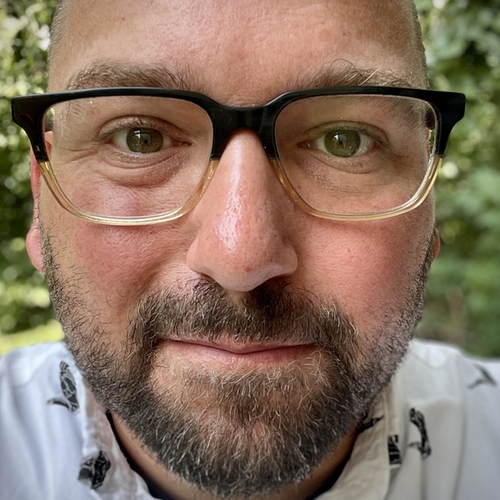Benjamin Bigelow is an assistant professor of German, Nordic, Slavic & Dutch in the College of Liberal Arts at the University of Minnesota Twin Cities. He joins the IAS as a residential faculty fellow for Fall 2021.
Ben is at work on a project titled “Scandinavian Racial Ecologies,” which examines how competing claims of cultural identity and racial belonging are related to different understandings of the environment. With a strong background in film and a manuscript in progress, Ben’s approach in this project acknowledges that, while claims of (white) Nordic identity, both in Scandinavia and in the US, are based on nature mythologies that draw direct connections between ethnicity and physical territory, emerging insights from ecology present a much less rigidly bound and territorial world. This project will move beyond the screen and result in a series of student- and community-oriented workshops, furthering ongoing collaborations with scholars at other institutions to shift discussions of Scandinavian cultures in the Twin Cities so that they reflect the diversity and complexity of Scandinavian societies today. Ultimately, these workshops will also further efforts to de-colonize and diversify the Scandinavian Studies curriculum at the U of M.
Read on to learn more about Ben’s work-in-progress!
IAS: Many audiences have probably only been exposed to the highly romanticized (white) versions of Scandinavian culture—such as those promoted at arts and cultural institutions like the American Swedish Institute here in town, or popularized in trends across culture. How does your work challenge these traditional tropes of identity?
Ben Bigelow: As your question suggests, the heritage-based engagements with the Nordic cultures that persist in Scandinavian-American communities—most of which in our area are several generations removed from migrant ancestors—often celebrate the symbols of Nordic folk cultures, including folk costumes, folk dancing, folk music, and characteristically Scandinavian-American food such as lutefisk. Not only is this version of Scandinavian culture an invention of nineteenth-century intellectual culture (rather than an “authentic” or ancient tradition), it is also a kind of time capsule presentation that has little to do with the diverse cultures of the Nordic region. I am interested in the complexity and diversity that these limiting ideas about Nordic folk identity elide. My own research—which focuses on the intersections of identity and the natural environment in contemporary Nordic horror films—analyzes media narratives that are emerging from the diverse and socially critical media context of present-day Nordic societies. The environmental horror films overturn conventional nature mythologies in the Nordic region, presenting the natural world as a site of (often threatening) entanglement with human populations. The nature imagery in these films works against the National Romantic traditions of the Nordic countries, a tradition that fixated on picturesque landscapes that were meant to symbolically represent the nation. For the project I am working on this semester, I will be organizing events that engage other scholars, artists, and activists to present similarly socially critical and de-idealized examinations of the contemporary Nordic cultures and societies.
IAS: You lived abroad—in Norway, if I’m not mistaken?—for a time. What experiences did you have there that contribute to your work and research now?
BB: Yes, I have lived in Norway for a total of four years. One of the aspects of Norwegians that outsiders comment on is how outdoorsy they are—a stereotype that happens to be completely true! I had two daughters who went to kindergarten and elementary school in Oslo, and was surprised by how much outdoor recreation and outdoor skills were fully integrated into the pedagogy for young children, and completely deemphasized the kind of academic learning that many American early childhood programs fixate on. The Norwegian landscape is diverse, sparsely populated, and stunningly picturesque. Experiencing Norwegian outdoor recreation as an American, I was always reminded how much of an outsider I was, in part because there are basic outdoor habits, techniques, and attitudes that most Norwegian people soak up from early childhood. Thinking about both the things I loved about living in Norway and the experiences that made me feel my outsiderness most acutely has been something I think about a lot in my work, since I research media narratives that critique the many conventional assumptions and ideas contemporary Nordic societies take for granted.
What are your hopes for your time as an IAS Fellow, and for your time among the other Fellows this semester?
Despite the variety of projects IAS Fellows are working on this semester, from many different disciplines, I have been happy to discover how many shared themes there are in our work, and how much our projects can potentially come into dialogue with one another. I am thrilled to have the chance to engage in discussions with such amazing scholars and thoughtful interlocutors, so my main hope is to be able to benefit from the fresh perspective they bring to my work. I hope the other Fellows will help me recognize my blind spots and challenge me to clarify my thinking so that it can be communicated to audiences outside of the Scandinavian Studies community.
